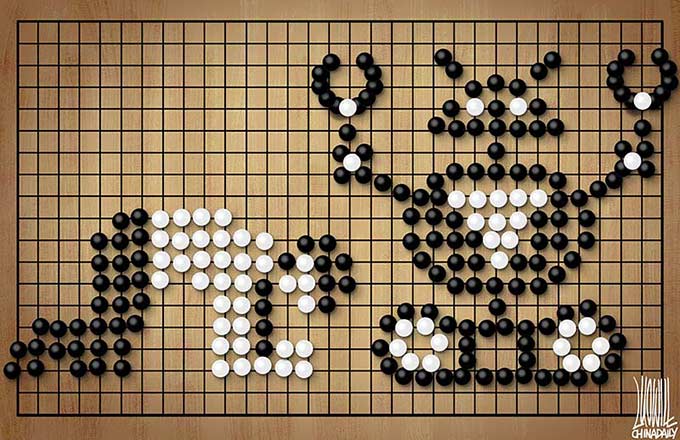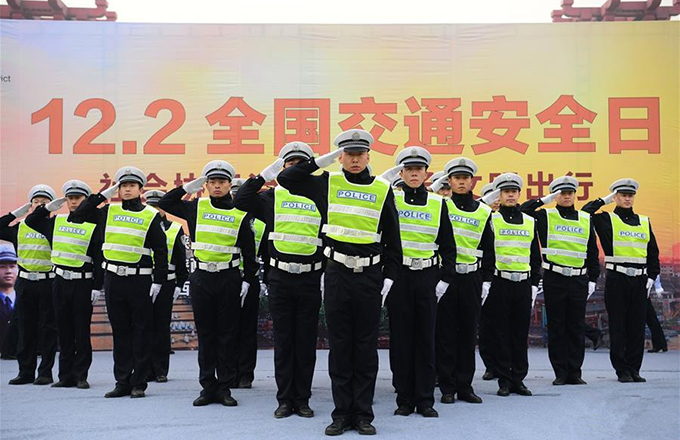Nuclear dangers in the Asia-Pacific region
When it comes to nuclear threats in the Asia-Pacific region, China faces the most daunting nuclear environment. The nuclear problem that China faces is not only confined to the Democratic People's Republic of Korea's nuclear program, but also includes the deployment of other strategic offensive and defensive capabilities that could damage the strategic stability among major nuclear-weapon states.
 |
|
Yao Yunzhu is a retired major general and director emeritus of the Center on China-America Defense Relations, Academy of Military Science, PLA.[Photo/China Daily] |
As far as the Korean Peninsula nuclear issue is concerned, three pints are very important. First, the peninsula faced a nuclear problem even before the DPRK developed its nuclear capability. During the Cold War, the "nuclear umbrellas" of the Soviet Union and the United States covered both Koreas. Russia withdrew its umbrella over the DPRK after the end of the Cold War. The US did not, although it withdrew all the tactical nuclear weapons from the peninsula. The change in the power balance and labeling of the DPRK as one of the "rogue states" and "state sponsors of terrorism" that form an "axis of evil" instilled in Pyongyang a deep sense of insecurity, which in turn made it believe that only nuclear weapons can guarantee its national security.
The international community, including China, has made great efforts to persuade the DPRK to abandon its nuclear program, and some initial efforts were successful. But in the end, due to the deep-rooted hostilities between the DPRK and the US those efforts didn't yield the desired result. For the US, it is hard to accept the DPRK, let alone a nuclear-armed DPRK. The DPRK, on its part, is convinced that only by developing nuclear weapons can it deter the US from overthrowing the existing regime.
So the US and the DPRK hold the key to resolving the issue.
Second, China is a major stakeholder in the security of the peninsula. Nuclearization in any form is detrimental to China's national interests. The DPRK's nuclear program and its nuclear tests pose a threat to China. And the peninsula nuclear issue has prompted the US and its allies to adjust their military deployment in Northeast Asia, expand their joint military drills, deploy ballistic missile defense systems, and disrupt the military balance in the region as well as the strategic stability between China and the US.
The growing probability of military conflicts is a threat to China's security and economy. Besides, Pyongyang's nuclear program is in violation of several UN Security Council resolutions and the nuclear nonproliferation treaty.
And third, China was not, is not and will not be, a bystander in the peninsula nuclear issue. It has devoted itself to resolving the issue as a stakeholder. From 2003 to 2007, China made concerted efforts to push forward the negotiation process, first through the three-party talks and then the Six-Party Talks. The latter produced the September 19 Joint Statement in 2005, which set a "road map" for the DPRK's comprehensive denuclearization and the peace process on the peninsula.
Recently, China proposed a "suspension-for-suspension" mechanism, which calls for Pyongyang to suspend its nuclear program and Washington and Seoul to suspend their massive military drills. This could bring the two key players (the US and the DPRK) back to the negotiating table, and thus start the "dual-track" process which China had proposed earlier, that is, parallel progress in denuclearization and establishment of a peace mechanism on the peninsula.
The "suspension for suspension" proposal serves the near-term goal of reducing tensions on the peninsula, while the "dual-track approach" will pave the road for denuclearization by initiating the peace process.
Thus China has provided a framework for addressing the issue and is open to suggestions from all sides, as long as they are conducive to restarting the negotiations, achieving the goal of denuclearization and maintaining peace and stability on the peninsula.
- DPRK's test-firing of missile denounced
- ROK approves civilian contact with DPRK
- Beijing urges calm as DPRK missile launch raises tensions
- DPRK confirms test firing another medium-range ballistic missile
- Japan using DPRK issue to beef up military
- Moon ready to visit DPRK under right conditions
- Build trust to resolve DPRK nuke issue




















